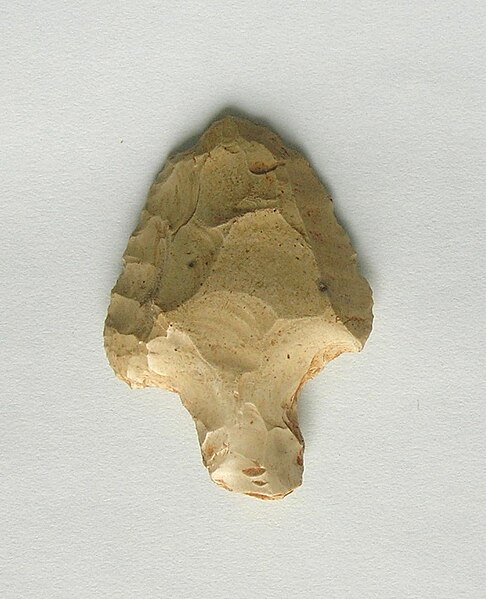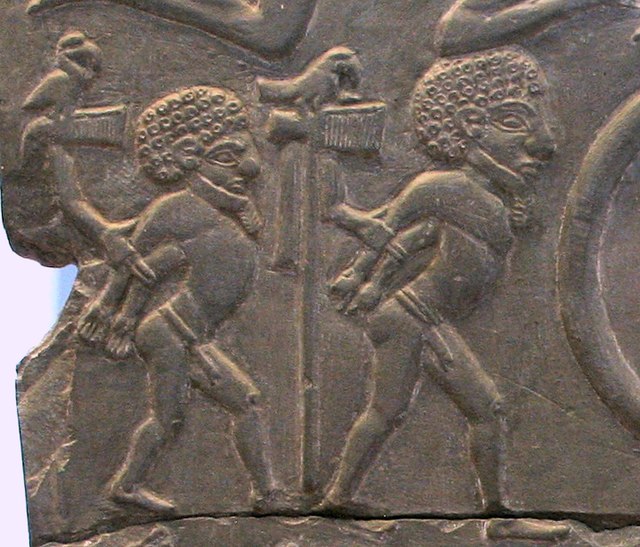Cosmetic palettes are archaeological artifacts, originally used in predynastic Egypt to grind and apply ingredients for facial or body cosmetics. The decorative palettes of the late 4th millennium BCE appear to have lost this function and became commemorative, ornamental, and possibly ceremonial. They were made almost exclusively out of siltstone with a few exceptions. The siltstone originated from quarries in the Wadi Hammamat.
The "Four dogs Palette", Room 633 of the Louvre.
Fragment of a ceremonial palette illustrating a man and a type of staff. Circa 3200–3100 BCE Predynastic, Late Naqada III.
Fragment of a palette 3200-2800 BCE
Palette in the shape of a boat, 3700-3600 BCE, Naqada I.
Prehistoric Egypt and Predynastic Egypt is the period of time starting at the first human settlement and ending at the First Dynasty of Egypt around 3100 BC.
Artifacts of Egypt from the Prehistoric period, from 4400 to 3100 BC. First row from top left: a Badarian ivory figurine, a Naqada jar, a Bat figurine. Second row: a diorite vase, a flint knife, a cosmetic palette.
Aterian point from Zaccar, Djelfa region, Algeria.
Merimde culture clay head, circa 5,000 BC. This is one of the earliest known representations of a human head in Egypt.
The prisoners on the Battlefield Palette may be the people of the Buto-Maadi culture subjected by the Egyptian rulers of Naqada III.








